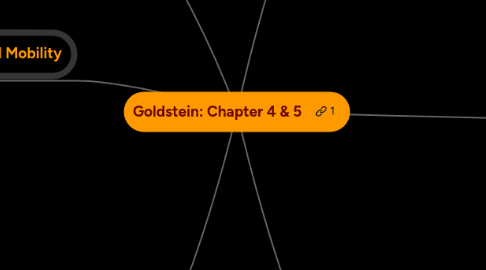
1. Crentes
1.1. Young women who fall in love with men in prison and attempt to convert them
1.2. Sexually and emotionally available to these men
1.3. They pretend to be siblings or family members
2. Children Not Raised by Parents
2.1. Siblings/Grandparets/other Family
2.1.1. These children fear the streets and see it as a disobeying of their mother
2.1.2. They go to school and get honest jobs
2.2. The Streets
2.2.1. Children left to the streets live shorter lives
2.2.2. End up in and out of prison
2.2.3. They have few friends and turn to violent means for money
2.2.4. Create a false sense of success
2.2.5. Not a sophisticated education
2.2.6. FUNABEM
2.2.6.1. A correctional institution for children
2.2.6.2. Could be a place to breed the next set of gangsters
2.2.7. Street Children
2.2.7.1. these kids are victim to the social economy of Brazil
2.2.7.2. Show Brazil in a bad light in the press to the world
2.2.7.3. Recruited to do the work for upper level favela gangsters
2.2.7.4. Targets for 'death squads'
2.2.7.5. Wage earners for households
2.2.8. Nurtured Children
2.2.8.1. Take on serious responsibility at an early age
2.2.8.2. Unbearable home-life can lead to dangerous street life
2.2.9. Women are vulnerable and revenge schemes played out among gangs
2.3. Little social mobility
2.3.1. honest professions
2.3.1.1. struggle their whole life
2.3.1.2. Domestic workers, construction workers, security guards
2.3.2. street life
2.3.2.1. might score good and make it to the 'good life'
3. Social Mobility
3.1. The poorer the less able to gain mobility
3.2. Younger generations are harder to convince that hard work equals mobility
3.3. New node
4. Male double standard
4.1. Men can sleep with whoever they want
4.2. Women must remain monogamous
4.3. 'the man' puts food on the table
4.4. Women should know the consequences of having sex and thus not be able to get abortions
4.5. All of these are done to preserve 'family values'
5. Violence
5.1. The poorer areas within Brazil have more violence
5.2. Those involved have codes with each other, like the 'code of silence'
5.3. The poor experience waves of violent and calm
5.4. Gang members run the favelas
5.4.1. They mediated relations with local police
5.4.2. Keep other gangs out of their territory
5.4.3. They are important to the citizens to keep the peace
5.4.4. Sense of belonging, involvement, employment to young men,
5.4.5. Good bandits keep the favelas calm
5.4.6. Respected and more helpful then the police
5.4.7. Solve local disputes with brute force and muder
5.4.8. Local citizens support the violence from gang members to get justice
5.5. Violence is experienced differently among class, race, gender, and location
5.6. Police cause brutality as well
5.7. Affect men and women differently
6. Color Zones
6.1. Blue Zones
6.1.1. high degree of government presence
6.2. Brown Zones
6.2.1. Very low government presence
6.2.2. Tend to have more violence and less understanding of democracy
6.2.3. Gangs run a parallel system as the government
6.2.4. Corrupt cops
6.2.4.1. Distrust of government and military
6.2.5. Reliance on gangs
6.3. Green Zones
6.3.1. Territorial penetration with lower presence of government
